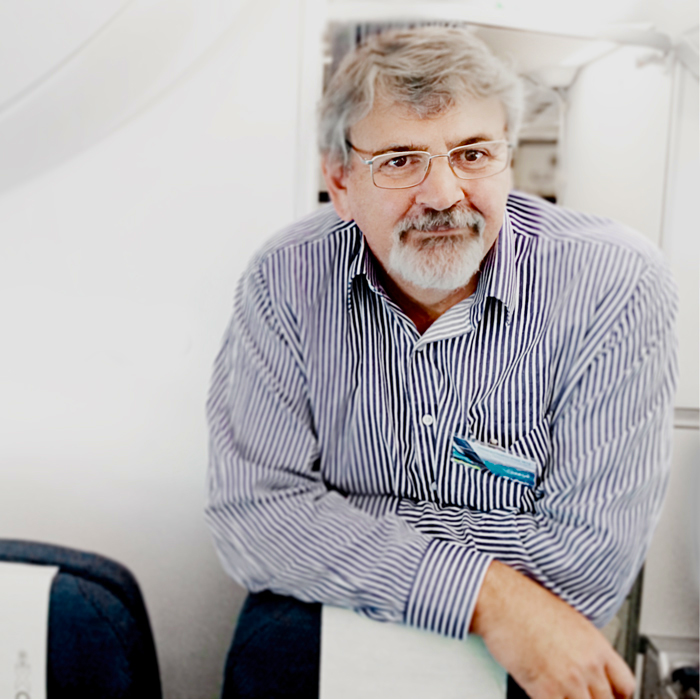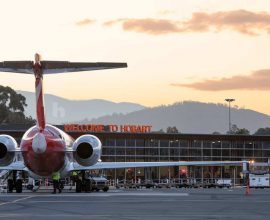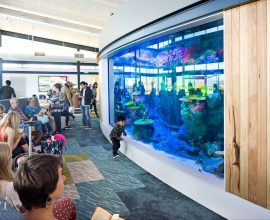Parking planes in the time of COVID-19
It was a Friday evening when the first Qantas Boeing 737 flew into Victoria’s Avalon Airport to be parked as a result of the COVID-19 crisis.
Airport chief executive Justin Giddings and his staff went out to watch with mixed feelings.
“We were sort of excited that these aircraft were coming in and then when it landed and taxied in, all of a sudden it turned to sadness,” he recalls.
“You realised that every one of those planes landing and being parked is probably equivalent to hundreds of jobs.
“It’s tough. You see the engineers out there working away and, sure, they have work and that’s great, but they’ve also got a lot of colleagues that have been stood down.
“So I think everyone’s very mindful and sensitive to that.”
The Qantas 737 is now one of many. Avalon at the time of writing had about 30 parked aircraft with additions still arriving and scores more are parked around Australia.
Qantas is parking more than 150 aircraft and Virgin Australia 125 as a result of the precipitous fall in demand and the need to preserve cash.
Avalon will see the majority of the Qantas Airbus A330s as well as more than a dozen Qantas and Jetstar Boeing 787s.
About 30 Qantas engineers have been deployed there to ensure the aircraft are ready to fly when demand returns.
Brisbane, Melbourne and Sydney will each have around 40 Qantas Group aircraft.
Brisbane Airport will have a mix of aircraft and many of them will be undergoing maintenance checks at the airline’s facilities there.
Melbourne gets a mix of Jetstar Airbus A320s and A321s and 787s as well as Qantas Boeing 737s and Airbus A380s.
Sydney is where five Boeing 747s will be parked along with a number of A380s, Qantas 737s and Jetstar A320/A321s.
Qantas said about 30 aircraft would be used as operational spares and will be spread across the network.
The main locations for Virgin are Brisbane (35 aircraft), Melbourne / Avalon (47 aircraft), Sydney (10 aircraft), Adelaide (7 aircraft) and Perth (approximately 25 aircraft).
The aircraft are parked in hangars and on available runway spaces and parking bays at the airports and there are a couple in New Zealand awaiting heavy maintenance.
Virgin is also using some of its aircraft as operational spares and those that remained parked are being maintained by engineers in accordance with regulatory and manufacturer requirements so they can efficiently return to service.
The airline says it has worked collaboratively with airports and is pleased with the outcome.
In Avalon, Giddings estimates the airport can take about 50 to 60 aircraft, depending on the aircraft size, and expects that capacity to be fully taken up.
The airport has drawn on the experience of its internationally renowned airshow and has most planes parked along Taxiway Alpha, a long taxiway parallel to the runway. Others are at terminal bays and in front of the hangars.
Avalon farewelled its last regular public transport flight by Jetstar at the end of March but when the planes started arriving both the low-cost carrier and AirAsia were still operating.
Giddings said safety was a key issue for both airline and airport personnel.
“People get a bit busy and under pressure and that’s where the accidents happen,” he says.
“So we’re just very mindful of making sure everything’s safe. And at the moment it’s working pretty well.”
Avalon’s proximity to engineering facilities in Melbourne and its history as an aircraft manufacturing hub and a Qantas heavy maintenance base make it well-suited for its current task.
“It’s good spot to park aircraft here,” Giddings agrees. “CASA’s been really good working with us on how we can do that.
“Qantas has been excellent in terms of being flexible so if we do have an aircraft movement, which is possible as we could end up doing some freight runs, we are able to move aircraft around.
“We’re also an alternate for aircraft coming into Tullamarine, so we need to be mindful of that commitment.”
The airport chief says there was no shortage of airlines seeking to park aircraft but its first loyalty was to customers.
Qantas “reached out pretty quickly” but AirAsia declined an offer of space because it was parking its aircraft in Kuala Lumpur.
“Really, it was about trying to help our customers as much as possible and obviously help out other airlines as well,” Giddings says, adding that he expects Qantas and Virgin to fill the airport.
 It’s a similar story at the big end of town and Brisbane Airport expects to have up to 100 aircraft parked ranging from an A380 to QantasLink Dash-8s.
It’s a similar story at the big end of town and Brisbane Airport expects to have up to 100 aircraft parked ranging from an A380 to QantasLink Dash-8s.
“We have created an additional 10 dedicated parking zones to accommodate the increased demand,” an airport spokesperson said.
“The areas include runway 14/32 (which has just been decommissioned early), Taxiway Papa, the logistics apron and various other aprons which we have modified to accommodate additional aircraft.”
Issues for Brisbane have included getting a handle of exactly how many aircraft it would receive and balancing the parking with the fact it is still running heavily reduced regular public transport operations.
“We solved this by planning for worst case and developing a flexible parking plan,” the spokesperson said.
“Another issue was trying to manage the existing regular operations while trying to park aircraft.
“Runway 14/32 wasn’t available until Monday morning, so we had to develop a parking ‘staging plan’ to solve this.
“We’ve also had to position aircraft in such a way we can begin to ‘switch’ bays back on when needed.”
The aircraft have to be parked in a way that they can be regularly maintained for an eventual return to service.
This need has also seen the airport make accommodations to allow maintenance staff to access areas which their licence normally would not allow them to go.
The one question facing all the airports is how long will this crisis last?
Giddings is planning for the medium term and expects a phased withdrawal of the aircraft as they go back into service.
As he waits for that to happen, he is keeping a café open in the terminal for workers still on site and is hoping to avoid laying off staff with moves such as redeploying casuals to clean the airport.
While the airport is taking a financial hit from the loss of traffic, he notes it has a big property portfolio with good tenants, including government agencies, and is home to essential services such as fire-fighting aircraft.
Despite the industry pain, Giddings supports government actions to contain the pandemic and he is cautiously optimistic about the longer term.
“I think what the government’s doing is right but everybody’s really got to do what they can to survive,” he says.
By Steve Creedy
About Steve Creedy
 An award-winning journalist, Steve began covering aviation in the United States in the early nineties before returning to Australia later that decade and editing The Australian’s aviation section for 17 years. He is editor of Airline Ratings and has co-authored books on industry initiatives aimed at reducing greenhouse emissions.
An award-winning journalist, Steve began covering aviation in the United States in the early nineties before returning to Australia later that decade and editing The Australian’s aviation section for 17 years. He is editor of Airline Ratings and has co-authored books on industry initiatives aimed at reducing greenhouse emissions.
Steve has joined the AAA to write interesting and informative editorial on the aviation industry.





